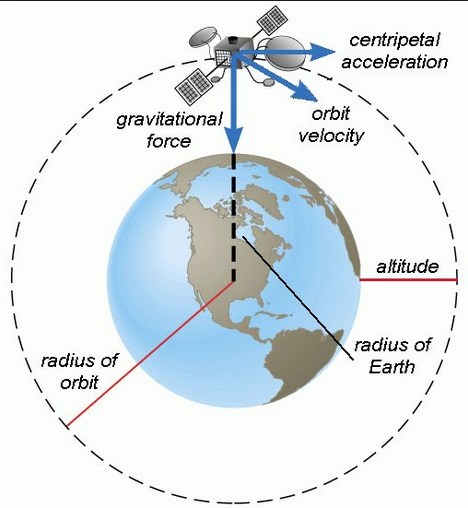The Speed of Gravity:
Why Einstein Was Wrong and Newton Was Right

It may surprise you to learn that the speed of gravity is something of an ongoing debate among many cosmologists today.
The textbook answer to the question “what is the speed of gravity?” is that it propagates at the speed of light. This answer is derived from Einstein’s version of relativity, which demands that nothing be able to propagate faster than the speed of light. Yet there is a large body of physical evidence that contradicts this theoretical assertion.
In 1998, physicist Tom Van Flandern authored a paper in Physics Letters A that remains one of the best refutations of Einstein’s version of relativity ever published. Van Flandern argues that Hendrik Lorentz’s version of relativity, which incorporates an aether that all matter moves through, is more correct than Einstein’s version, based on experimental observations about the speed of gravity. Lorentz and Einstein’s versions of relativity are actually very similar. The main difference being that the speed of light is not a limiting factor in Lorentz’s version of relativity. Van Flandern argues that the speed of gravity is far faster than the speed of light, just as Newton’s laws describe it to be. Newton’s laws declare gravity to propagate instantaneously.
I’m sure by now you may be wondering what kind of proof does Van Flandern have to offer? Van Flandern starts out by demonstrating that the visible light arriving from the Sun to Earth comes from a measurably different location in the sky than the point that the Earth is accelerating towards in space. This is because light propagates at light speed, while gravity propagates at infinite speed. The fact that the Earth is not accelerating toward the visible location of the Sun, but rather 20 arc seconds in front of the visible Sun (where the Sun will visibly be 8.3 minutes in the future) is very strong evidence against gravity propagating at the speed of light. This same light delay effect is seen in the positions of stars as well.
If gravity propagated between the Sun and the Earth at the same speed as visible light, the Earth would double the distance from the Sun in 1200 years, which obviously isn’t happening. Many other notable physicists besides Newton and Lorentz also concluded that orbital calculations must be made using an infinite speed of gravity. Sir Arthur Stanley Eddington’s orbital calculations rely on gravity having an infinite speed, and Pierre-Simon Laplace calculated gravity to have a speed of at least 10^8 times the speed of light.
Van Flandern goes on to discuss GPS clocks, which are often cited as being proof positive of Einstein’s relativity. It may surprise you, but the GPS system doesn’t actually use Einstein’s field equations. In fact, this paper by the U.S. Naval Observatory tells us that, while incorporating Einstein’s equations into the system may slightly improve accuracy, the system itself doesn’t rely on them at all. To quote the opening line of the paper, “The Operational Control System (OCS) of the Global Positioning System (GPS) does not include the rigorous transformations between coordinate systems that Einstein’s general theory of relativity would seem to require.”
Van Flandern explains why this is so:
Finally, the Global Positioning System (GPS) showed the remarkable fact that all atomic clocks on board orbiting satellites moving at high speeds in different directions could be simultaneously and continuously synchronized with each other and with all ground clocks. No “relativity of simultaneity” corrections, as required by SR, were needed. This too seemed initially to falsify SR. But on further inspection, continually changing synchronization corrections for each clock exist such that the predictions of SR are fulfilled for any local co-moving frame. To avoid the embarrassment of that complexity, GPS analysis is now done exclusively in the Earth-centered inertial frame (the local gravity field). And the pre-launch adjustment of clock rates to compensate for relativistic effects then hides the fact that all orbiting satellite clocks would be seen to tick slower than ground clocks if not rate-compensated for their orbital motion, and that no reciprocity would exist when satellites view ground clocks.
Van Flandern also discusses the famous Michelson-Morely experiment, the Michelson-Gale experiment, and the Sagnac experiment, which are often cited as discrediting Lorentz’s version of relativity. The truth of the matter is that Lorentz’s version of relativity can easily account for the observations if one simply assumes a local gravity field with preferred frame for local observers, rather than a universal gravity field. Further, at the time, the wave nature of matter has not yet been discovered by Louis de Broglie.
Van Flandern concludes his paper by saying:
Near the end of his career, Lorentz is quoted as having graciously conceded the contest: “My theory can obtain all the same results as special relativity, but perhaps not with a comparable simplicity.” (private communication from C.O. Alley) Today, with hindsight, we might make a somewhat different assessment: “Special relativity can explain all the experimental results in Table II that Lorentzian relativity can, but perhaps not with a comparable simplicity.” Even so, SR cannot explain the faster-than-light propagation of gravity, although LR readily can.
We conclude that the speed of gravity may provide the new insight physics has been awaiting to lead the way to unification of the fundamental forces.

